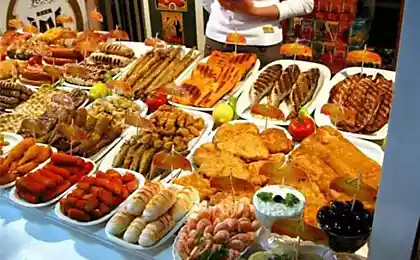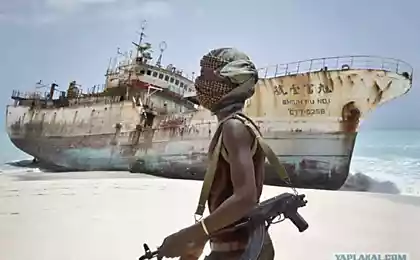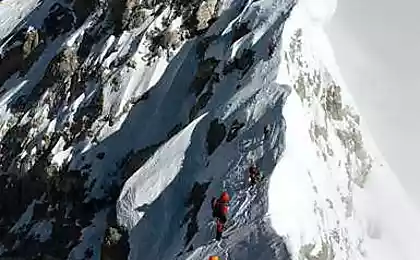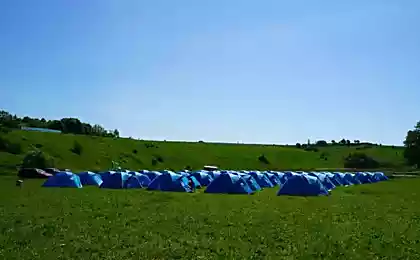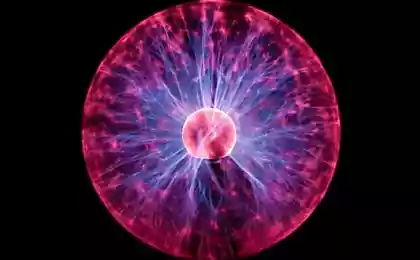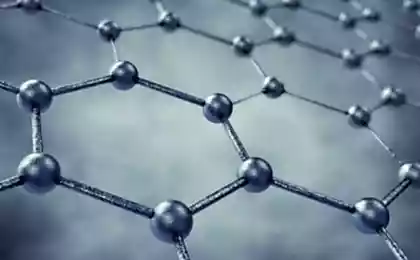633
9 the most dangerous places to live on Earth
Pole of Cold: Verkhoyansk, Russia
In the cold taiga, a distance of 4,800 km east of Moscow, in the depths of Siberia, is the town of Verkhoyansk. The lowest temperature of minus 67, 6 ° C was recorded here in February 1892. It is the oldest city in the Arctic Circle, with a population of only 1173 human. Verkhoyansk is the coldest city in the world, so-called cold pole. It is difficult to argue, given that from September to March the sun shines an average city in less than five hours a day, and winter temperatures rarely rise above -40 ° C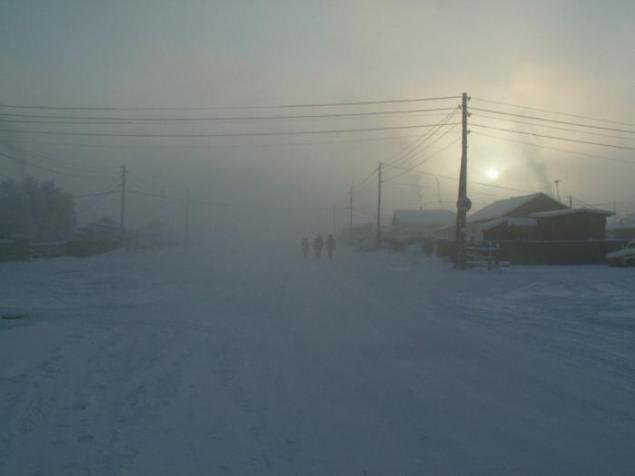
Fire Mountain: Mount Merapi, Indonesia
Even during the coolest periods of the largest active volcano in Indonesia on the island of Java continues to smolder dangerously. Smoke from the "Mountain of Fire", as its name translates to English, it rises to a height of three kilometers. When the eruption of Mount Merapi in 1974 destroyed two village were several deaths of tourists and volcanologists, the graves can be found right on the volcano. In 2010, when the next eruption, were evacuated 350,000 people and 353 people pogibli.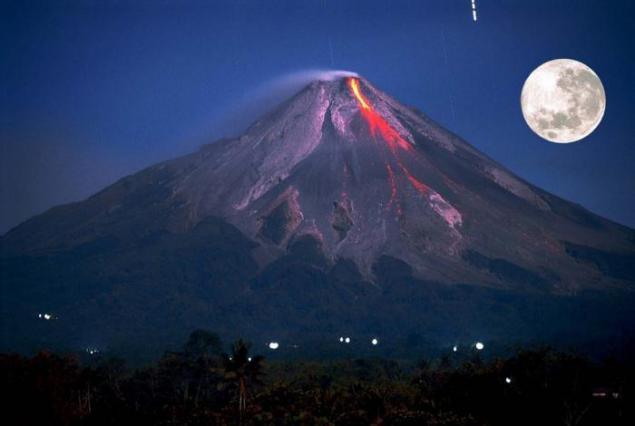
The Perfect Storm: Gonaives, Haiti
Subtropical Storm Fay has covered the coastal city of Gonaives in August 2008, immediately after it was hit by Hurricane Gustav, and later were Hurricanes Hanna and Ike. So one of the five largest cities in Haiti was under the gun just four devastating tropical cyclones, resulting in Gonaives virtually washed away into the sea. Most of the city was buried under mud, or submerged in filthy water, the level of which in some places exceed 3, 5 meters. The death toll has reached 500 people, but 2008 was the deadliest in the history of Gonaïves in 2004 hit the city hurricane Jenny buried about three thousand chelovek.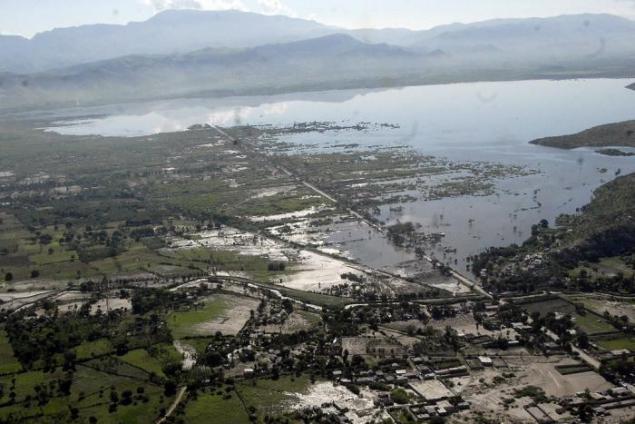
Lake death: Central Africa
Lake Kivu, located on the border between the Democratic Republic of the Congo and Rwanda, is one of the African Great Lakes region. The surface area of the lake is about 2,700 square kilometers, and its depth reaches 480 meters. However, under the lake are deposits of carbon dioxide and 55 billion cubic meters of methane, which is a deadly, as the slightest earthquake or volcanic activity could lead to a devastating explosion. Two million people out of a population of nearby territories are in constant fear be killed by a methane explosion or choking carbon gazom.
Ephemeral Islands Maldives
10% of the territory of the Republic of Maldives - a chain of 20 atolls, consisting of 1,192 coral islands became uninhabitable after the Indian Ocean tsunami in 2004 that killed more than 80 people and left a third of the population homeless. However, ahead of the island are waiting for more ordeals: Maldives can completely submerge in a few decades, because now none of the islands does not rise above sea level by more than 2 metra.
The world capital of hurricanes: Grand Cayman
Cayman Islands, which are considered a real tropical paradise, located in the Caribbean Sea, 240 kilometers south of Cuba. Many tourists come to the Caribbean for the sake of unspoilt beaches and diving. However, Grand Cayman, the largest of the three islands, has become known as the world capital of hurricanes, since he suffers from devastating floods in average every 2, 16 of the year - more than any other area in the Atlantic Ocean. Raged here in 2004, Hurricane Ivan destroyed nearly 80% of all buildings on the island and left 40,000 residents without electricity and water for several dney.
Tornado Alley: Oklahoma City, United States
More than a million people live along the motorway I-44 in the US, which connects the capital of the state of Oklahoma, with its second largest city - Tulsa. Each spring, when cool and dry air from the mountains down into the valley and meets with warm moist air from the ocean, along I-44 there are devastating whirlwinds. Since 1890, Oklahoma City and the surrounding area were attacked by a tornado more than 120 times. In May 1999, just 70 vortices were held in the states of Oklahoma, Kansas and Texas, and the most devastating of which swept through Oklahoma City, destroying 1,700 homes and damaged more than 6,500 buildings and killing more than 40 chelovek.
Wandering the desert: China
The once fertile oasis of Minqin is experiencing very turbulent times, being sandwiched between the deserts. Ten-year drought and the disappearance of the rivers led to the fact that the south-east and north-west of the region is rapidly approaching sands. In total, since 1950, the desert swallowed up more than 160 square kilometers, while the number of local population over the same period rose from 860 thousand to more than two million people. A huge desert close to people at a speed of 10 meters per year, reducing the area of arable land in six raz.
In the cold taiga, a distance of 4,800 km east of Moscow, in the depths of Siberia, is the town of Verkhoyansk. The lowest temperature of minus 67, 6 ° C was recorded here in February 1892. It is the oldest city in the Arctic Circle, with a population of only 1173 human. Verkhoyansk is the coldest city in the world, so-called cold pole. It is difficult to argue, given that from September to March the sun shines an average city in less than five hours a day, and winter temperatures rarely rise above -40 ° C

Fire Mountain: Mount Merapi, Indonesia
Even during the coolest periods of the largest active volcano in Indonesia on the island of Java continues to smolder dangerously. Smoke from the "Mountain of Fire", as its name translates to English, it rises to a height of three kilometers. When the eruption of Mount Merapi in 1974 destroyed two village were several deaths of tourists and volcanologists, the graves can be found right on the volcano. In 2010, when the next eruption, were evacuated 350,000 people and 353 people pogibli.

The Perfect Storm: Gonaives, Haiti
Subtropical Storm Fay has covered the coastal city of Gonaives in August 2008, immediately after it was hit by Hurricane Gustav, and later were Hurricanes Hanna and Ike. So one of the five largest cities in Haiti was under the gun just four devastating tropical cyclones, resulting in Gonaives virtually washed away into the sea. Most of the city was buried under mud, or submerged in filthy water, the level of which in some places exceed 3, 5 meters. The death toll has reached 500 people, but 2008 was the deadliest in the history of Gonaïves in 2004 hit the city hurricane Jenny buried about three thousand chelovek.

Lake death: Central Africa
Lake Kivu, located on the border between the Democratic Republic of the Congo and Rwanda, is one of the African Great Lakes region. The surface area of the lake is about 2,700 square kilometers, and its depth reaches 480 meters. However, under the lake are deposits of carbon dioxide and 55 billion cubic meters of methane, which is a deadly, as the slightest earthquake or volcanic activity could lead to a devastating explosion. Two million people out of a population of nearby territories are in constant fear be killed by a methane explosion or choking carbon gazom.

Ephemeral Islands Maldives
10% of the territory of the Republic of Maldives - a chain of 20 atolls, consisting of 1,192 coral islands became uninhabitable after the Indian Ocean tsunami in 2004 that killed more than 80 people and left a third of the population homeless. However, ahead of the island are waiting for more ordeals: Maldives can completely submerge in a few decades, because now none of the islands does not rise above sea level by more than 2 metra.

The world capital of hurricanes: Grand Cayman
Cayman Islands, which are considered a real tropical paradise, located in the Caribbean Sea, 240 kilometers south of Cuba. Many tourists come to the Caribbean for the sake of unspoilt beaches and diving. However, Grand Cayman, the largest of the three islands, has become known as the world capital of hurricanes, since he suffers from devastating floods in average every 2, 16 of the year - more than any other area in the Atlantic Ocean. Raged here in 2004, Hurricane Ivan destroyed nearly 80% of all buildings on the island and left 40,000 residents without electricity and water for several dney.

Tornado Alley: Oklahoma City, United States
More than a million people live along the motorway I-44 in the US, which connects the capital of the state of Oklahoma, with its second largest city - Tulsa. Each spring, when cool and dry air from the mountains down into the valley and meets with warm moist air from the ocean, along I-44 there are devastating whirlwinds. Since 1890, Oklahoma City and the surrounding area were attacked by a tornado more than 120 times. In May 1999, just 70 vortices were held in the states of Oklahoma, Kansas and Texas, and the most devastating of which swept through Oklahoma City, destroying 1,700 homes and damaged more than 6,500 buildings and killing more than 40 chelovek.

Wandering the desert: China
The once fertile oasis of Minqin is experiencing very turbulent times, being sandwiched between the deserts. Ten-year drought and the disappearance of the rivers led to the fact that the south-east and north-west of the region is rapidly approaching sands. In total, since 1950, the desert swallowed up more than 160 square kilometers, while the number of local population over the same period rose from 860 thousand to more than two million people. A huge desert close to people at a speed of 10 meters per year, reducing the area of arable land in six raz.

15+ Air Passengers with which you would not like to be in the same plane
25+ puppies that look like real Bears
